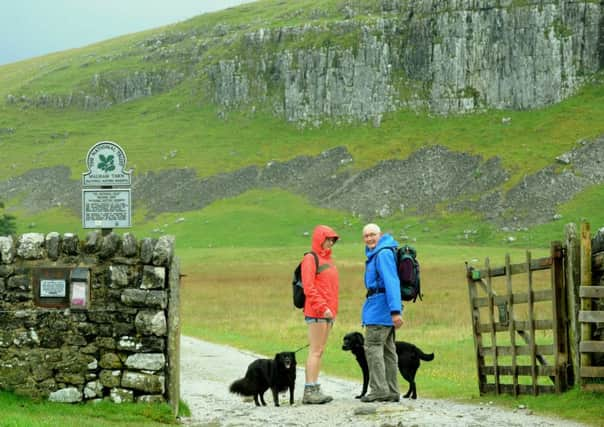Country & Coast: Alluring azure of landlocked Dales


Nevertheless, the area around the outfall of the beck that is regarded as the source of the River Aire attracts picnicking families and sunbathers, with the shallow water seemingly as safe for paddling as Bridlington beach.
There is no holiday resort bustle of fish and chips, candy floss and amusement arcades, of course, but the water looks sparkling blue and inviting while the requisite seaside soundtrack is provided by flights of black-headed gulls scavenging for sandwich crusts.
Advertisement
Hide AdAdvertisement
Hide AdSadly, there are very few days in the year when the weather is good enough for the tarn to achieve this transformation. Most of the time its default appearance is that of a dull grey sheet broken by white capped waves when the wind is blowing, which it usually does up there. This is, after all, the highest lake in England, and even in summer its visitors often have the good sense to wrap up in fleeces and Gore-Tex.
The tarn is one of only two natural lakes in the Yorkshire Dales - Semer Water near the Wensleydale village of Bainbridge is the other - and as such it is a powerful magnet not only for people but birds, butterflies and mammals. For beautiful though the National Park’s limestone landscape happens to be, it does not host a wealth of wildlife per square mile compared to other habitats. A notable exception has always been Malham Tarn, however, and the woods and area of wetland on its north and west shores form a long-established nature reserve run by the Field Studies Council.
There used to be a healthy breeding population of great-crested grebes, but the species has become a rarity there in recent years. Some compensation has been provided by barn owls, though, and a pair has returned to breed. Also present in summer is the beautiful yellow wagtail, once the iconic species of Dales hay meadows but now dwindling in numbers.
Red grouse were once plentiful on surrounding moors back when Malham Tarn House was not a field studies centre, as it is today, but a hunting lodge. They have now largely disappeared, although in the past couple of years there has been a limited recolonisation of Tarn Moss on the west side of the lake.
Advertisement
Hide AdAdvertisement
Hide AdIt is the fenland that provides most rewards on a summer visit to Malham Tarn. There are emerald and azure damselflies, as well as dark green fritillaries and plenty of green hairstreak butterflies. Even in autumn, the whole area can often produce surprises.
Last year I saw a party of redpolls flitting through the trees. Later on, long after the shore has ceased to be a landlocked seaside resort, ducks from the north like smew and goldeneye can suddenly appear to brighten up even the dullest winter day.